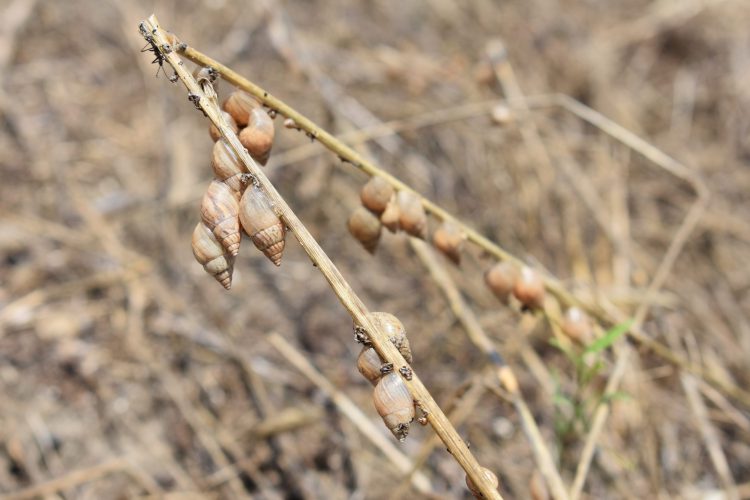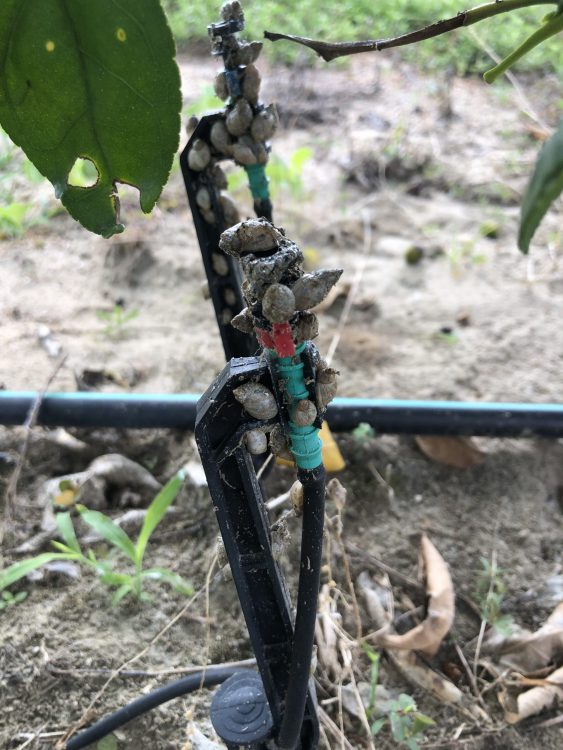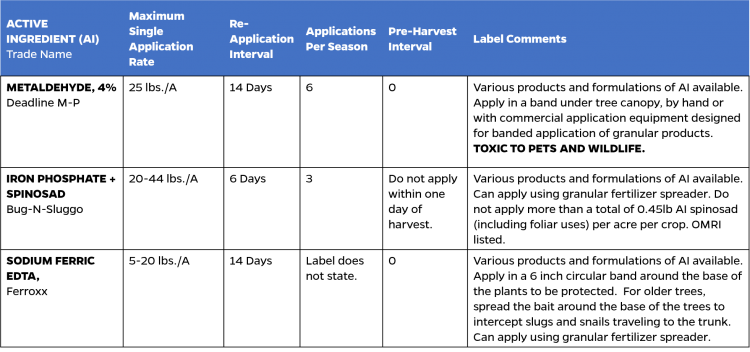
Snails have become a burden in the Panhandle, particularly for row crops such as corn, cotton, soybeans, and peanut at harvest time, but are now becoming an issue for citrus producers. Credit: Danielle Sprague, UF/IFAS.
–

The snails don’t appear to be damaging citrus trees. The main problem for citrus growers has been snails clogging micro-sprinkler irrigation emitters. Credit: Danielle Sprague, UF/IFAS
In recent years, snails have become a burden in the Panhandle, particularly for row crops such as corn, cotton, soybeans, and peanuts. Snails haven’t appeared to cause damage to plants, but have mainly been a problem at harvest time due to the sheer numbers of them. Recently, snails have become an issue for citrus growers as well. The main problem for citrus growers has been clogged micro-sprinkler irrigation emitters.
Several species of snails are present in Florida, but the species we are seeing large populations of in our area has been identified as Bulimulus sporadicus. They are tan colored with a pointed shell, and mature snails range from 3/4″ to 1-inch long. This species was first reported in Florida in 2009, and was introduced from the West Indies. Since then, populations have been reported in several Florida counties as well as other states including Alabama, Georgia, and Mississippi. UF/IFAS Extension Agents conducted a survey last spring and found large populations of this species in several Panhandle counties ranging from Escambia to Jefferson County.
Snails rely on humidity and moisture to complete their life cycle, and with the lack of rainfall lately, it’s no surprise they are being found on micro-sprinkler emitters, as they are search for moisture. The snails don’t appear to be feeding or causing damage to trees, but they are aggregating on emitters causing them to stop-up and reduce irrigation efficiency. This situation is particularly troublesome in the midst of a drought.
–
Considerations for snail management in citrus:
-
Snails favor high humidity and take shelter in places such as vegetation, mulch, or leaf litter that provide them with a moist environment. Keeping the ground under the tree canopy free of weeds will help reduce their habitat.
-
Tree wraps may also provide shelter for snails. Removing tree wraps as soon as practical may also help reduce numbers.
-
Snails can be managed chemically with molluscicides. Molluscicides target slugs and snails, and are different than insecticides.
-
Specially formulated molluscicide baits are available and labeled for use in citrus.
–
Baits available for use in citrus:
-
Apply baits after a site is watered or irrigated.
-
Regardless of the brand, baits should be scattered thinly in and around vegetation, so as to make it unlikely that pets or wildlife will ingest too much of the bait.
-
Snail baits do not require a restricted-use pesticide (RUP) license.
–
For more information:
Terrestrial Snails (Phylum Mollusca, Class Gastropoda) Affecting Plants in Florida
Managing Snails in Citrus Orchards
Snails Have Invaded the Western Panhandle
- Discover the Sweet Potential of Persimmons at the UF/IFAS Persimmon Field Day – October 23 - September 12, 2025
- 2025 Big Bend Pesticide Safety Training Series – September 8-11 - July 18, 2025
- Mechanical Pruning of Citrus Groves - March 7, 2025

